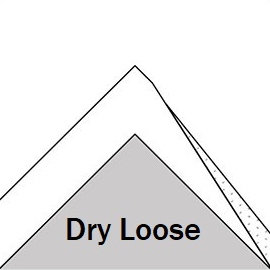Gudauri
Natural avalanches are unlikely, human-triggered avalanches are possible. Small avalanches in specific areas, or large avalanches in isolated areas.
A small amount of new snow plus some wind brings the possibility of loose snow and windslab avalanches, running on recent melt-freeze crusts.
Forecast issued at: 24 February 2024 20:00
Forecast valid until: 26 February 2024 20:00
Forecaster: Manu Greer
High Alpine
> 2600m
2 Moderate
Heightened avalanche conditions on specific terrain features. Evaluate snow and terrain carefully; identify features of concern.
Alpine
2000m - 2600m
2 Moderate
Heightened avalanche conditions on specific terrain features. Evaluate snow and terrain carefully; identify features of concern.
Sub Alpine
< 2000m
1 Low
Generally safe avalanche conditions. Watch for unstable snow on isolated terrain features.
Avalanche Problems
Loose Dry

Up to 15cm of recent snow has fallen on top of a crust in some places, especially on sunny aspects. There is also an older crust on shady aspects below 2800 m. Small avalanches on this layer have been observed in the past week. Keep this in mind when approaching steep terrain with hazards like rocks or cliffs below.
| Sensitivity | The specific avalanche problem type is reactive to human rider triggers. Easy to trigger with ski cut. |
| Distribution | Many locations. Evidence for instabilities is frequently found, in many locations. |
| Time of Day | All day |
| Trend | No change |
| Confidence | Moderate |
Wind Slab

Small areas of windslab could be found near ridges on a range of aspects due to SW/W and N/NE winds in the last couple of days. They could be up to 30 - 40 cm deep and could run fast on a crust layer below 2800 m.
| Sensitivity | The specific avalanche problem type is reactive to human rider triggers. Easy to trigger with ski cut. |
| Distribution | Specific areas, with common characteristics. Evidence for instabilities exists, but it is not obvious and finding it requires careful observations. |
| Trend | Deteriorating |
| Confidence | Moderate |
Persistent Slab

Weak, facetted snow layers have been found around buried mid-pack crusts and in areas with shallow snow depth. The problem is worse in the north of the region where the snow is shallower. With recent warm temperatures these layers should have stabilised at lower elevations, but remain cautious on steep terrain.
| Sensitivity | The specific avalanche problem type is difficult to trigger with a human rider. |
| Distribution | A few, isolated locations; evidence for instabilities is rare and hard to find. |
| Time of Day | All day |
| Trend | Improving |
| Confidence | Moderate |
Recent Avalanches and Snowpack
Recent avalanche activity:
Small loose dry avalanches reported on N and NE aspects in high alpine steep terrain February 18th.
Glide slabs continue to be active on multiple aspects (more commonly E, S and W) below about 2600 m, some up to size 2. These can release at any time - if you see cracks in the snow, do not stop under these areas!
Snowpack:
Around 10cm of new snow fell on Thursday 22nd, with moderate SW and W winds for a time on Thursday then moderate NE on Saturday. There is a melt-freeze crust under the new snow on the S half, and on N aspects a strong icy crust lies buried below up to 20 cm of dry snow, below about 2800 m. Buried crusts and weak layers could still be found in some places, especially on N aspects at higher elevations. Watch out for sugary (faceted) snow in areas where the snow is shallow. Warm temperatures have been gradually strengthening the snowpack below about 2600 m, but the problem layers should not be forgotten yet. Check out recent snow profiles (or add your own!) at snowpilot.org
Weather
Temperatures have been cool during the last 2 days, with NE winds gusting up to 30 km/h on Saturday afternoon. Snow showers are possible on Sunday and Monday but only a few cm of snow are expected. Light N winds. Freezing level 1250 m Sunday, 950m Monday.
Disclaimer
Our avalanche forecasters are internationally qualified and experienced professionals, and data is provided by skilled observers. We encourage you to make your own observations and decisions, without relying solely on our forecast, since any forecast is a generalised 'best guess', and in certain cases it might be inaccurate. We can not be held liable for any actions you take in the backcountry that may result in injury, loss or death.